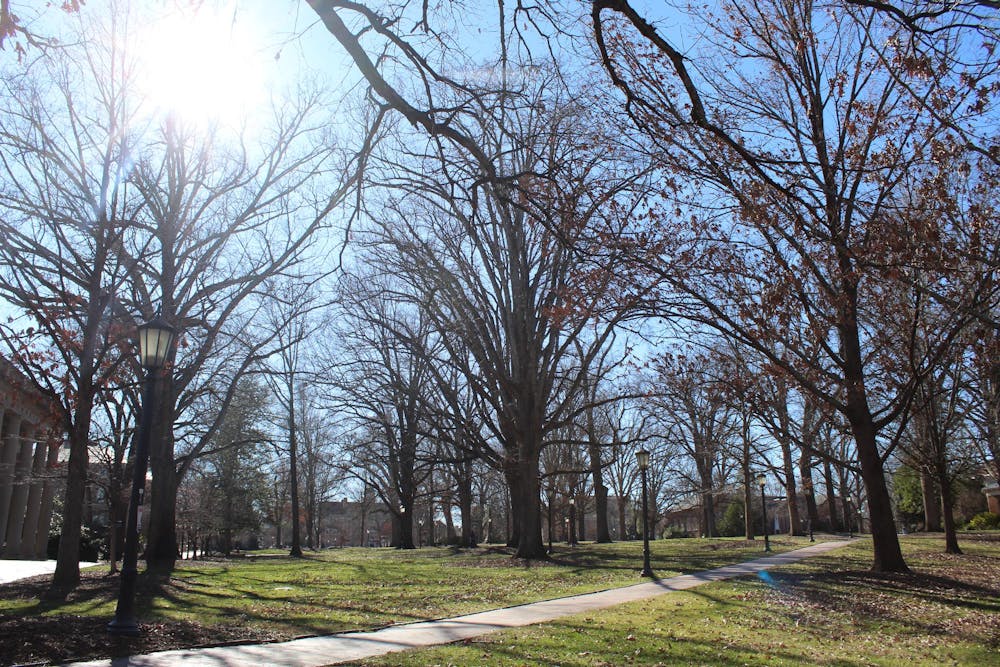It could be any other sunny day — walking to class late, frantically tapping your phone screen to check the time, or walking out of The Meantime Coffee Co., a latte in hand — or it could be your first day of class, waiting in line to take a sip from the Old Well in the hopes that you’ll get a 4.0 your first semester. Maybe you’re in your Carolina Blue cap and gown, beaming, knowing soon you will have graduated college (but maybe not with a 4.0).
Through all these moments that make up a critical four years of your life, Davie Poplar has been there, winding around you and the Old Well — just as it has for the past 300 years.
But walking through campus or lounging under a tree, book in hand, Davie Poplar is just one of many old trees that surround the student body, giving shade and small shutters of light as you considers the possibilities of your future — just as so many Carolina students have.
And while trees are a standing commitment to the past, and to the future, they too have a lifespan — a lifespan that the Carolina Tree Heritage has dedicated itself to expanding, Susan Cohen, partner of the program, said.
“I have a really strong connection with trees and forestry and these big trees, and UNC values them, which is also really special, right?” she said. “They’re really beautiful. They're really iconic.”
Cohen, alongside University arborist Tom Bythell and Michael Everhart, created the program in 2019. Since then, the team has been dedicated to giving new life to trees on campus by recycling them and giving them back to the student body in myriad ways.
Rather than letting the wood rot, students can use the BeAM Makerspace to recycle the wood for small art projects such as making bookmarks and small pens or anything else they can imagine, Bythell said.
“There's no real value other than any of the boards you can buy from Lowe's, but it's Carolina wood,” he said. “We can make something out of it, and somebody can take it with them.”
Bythell has been working at the University for over 25 years and works with University Grounds and Landscaping to make campus a space for serenity and intellect, he said.




